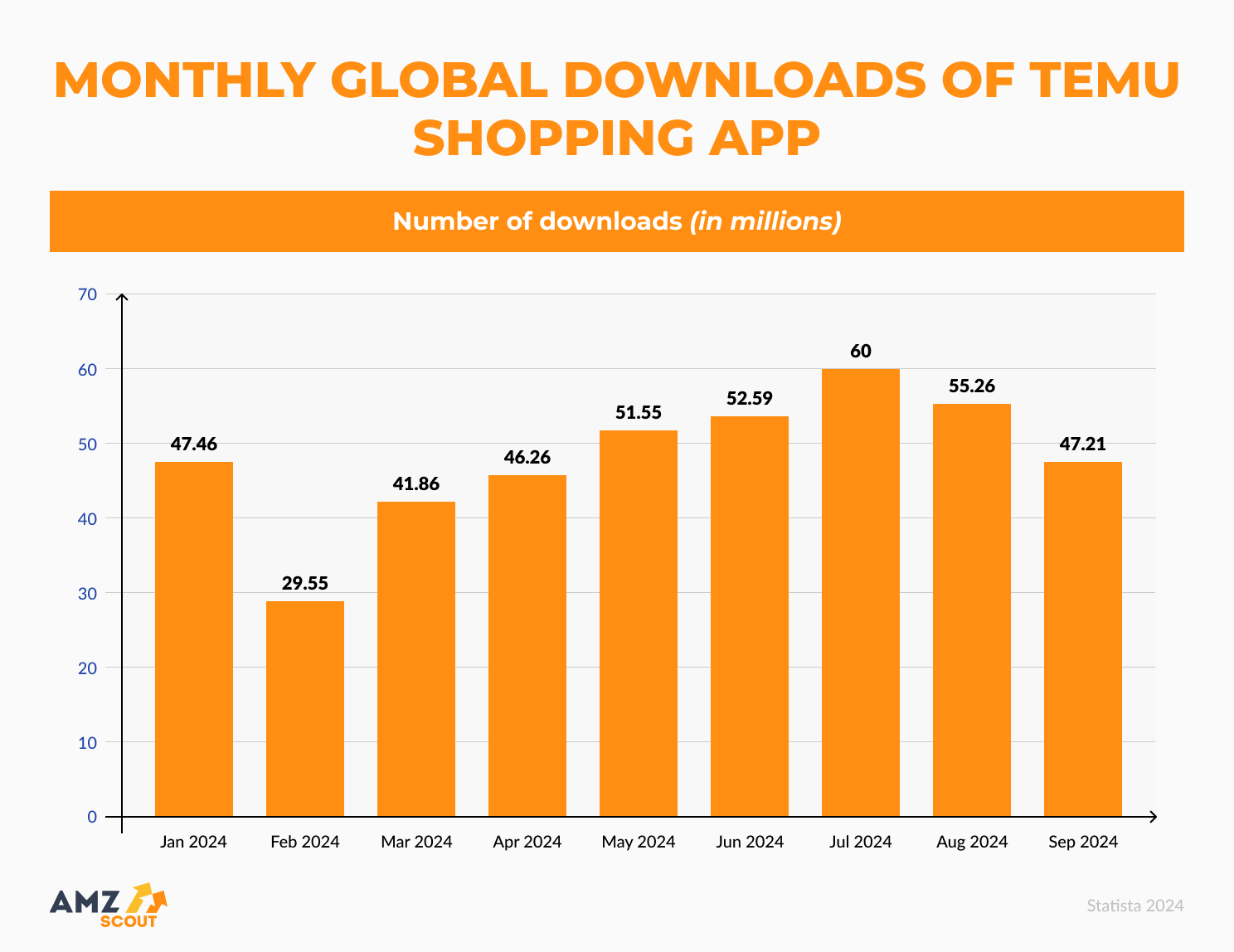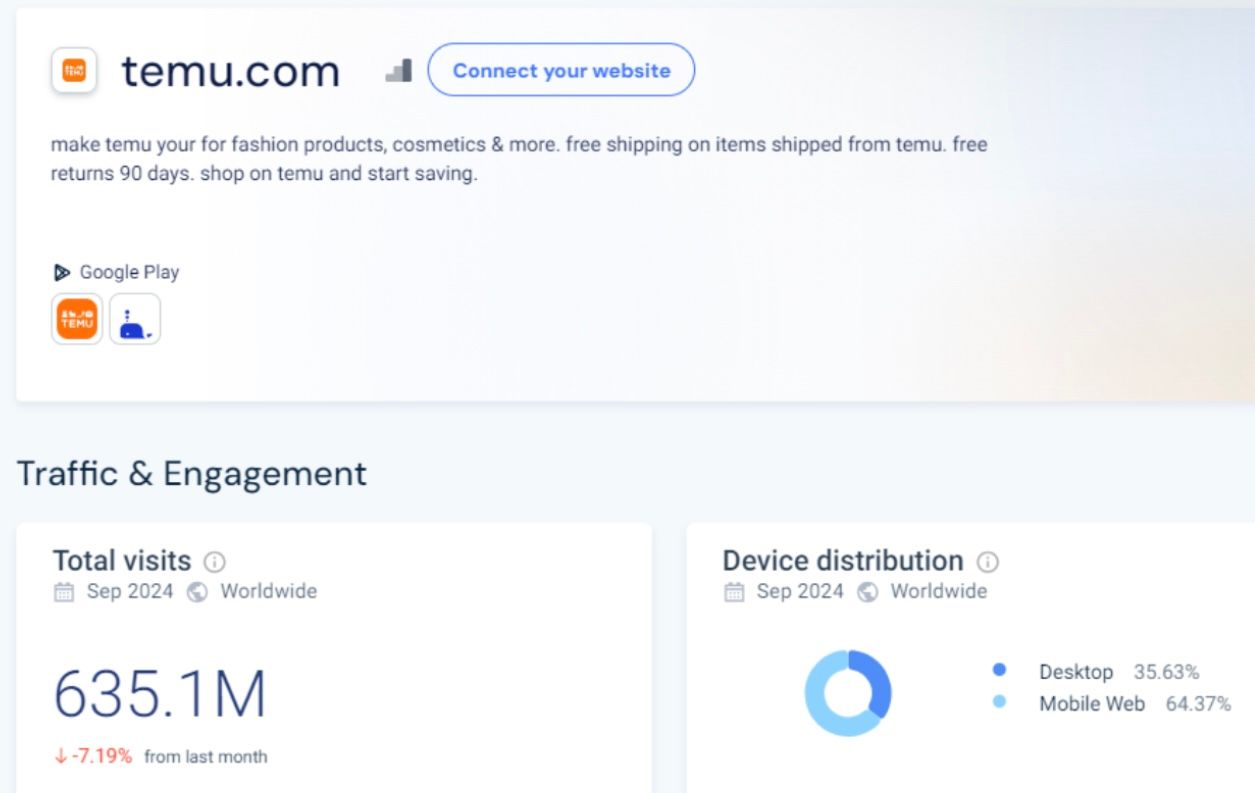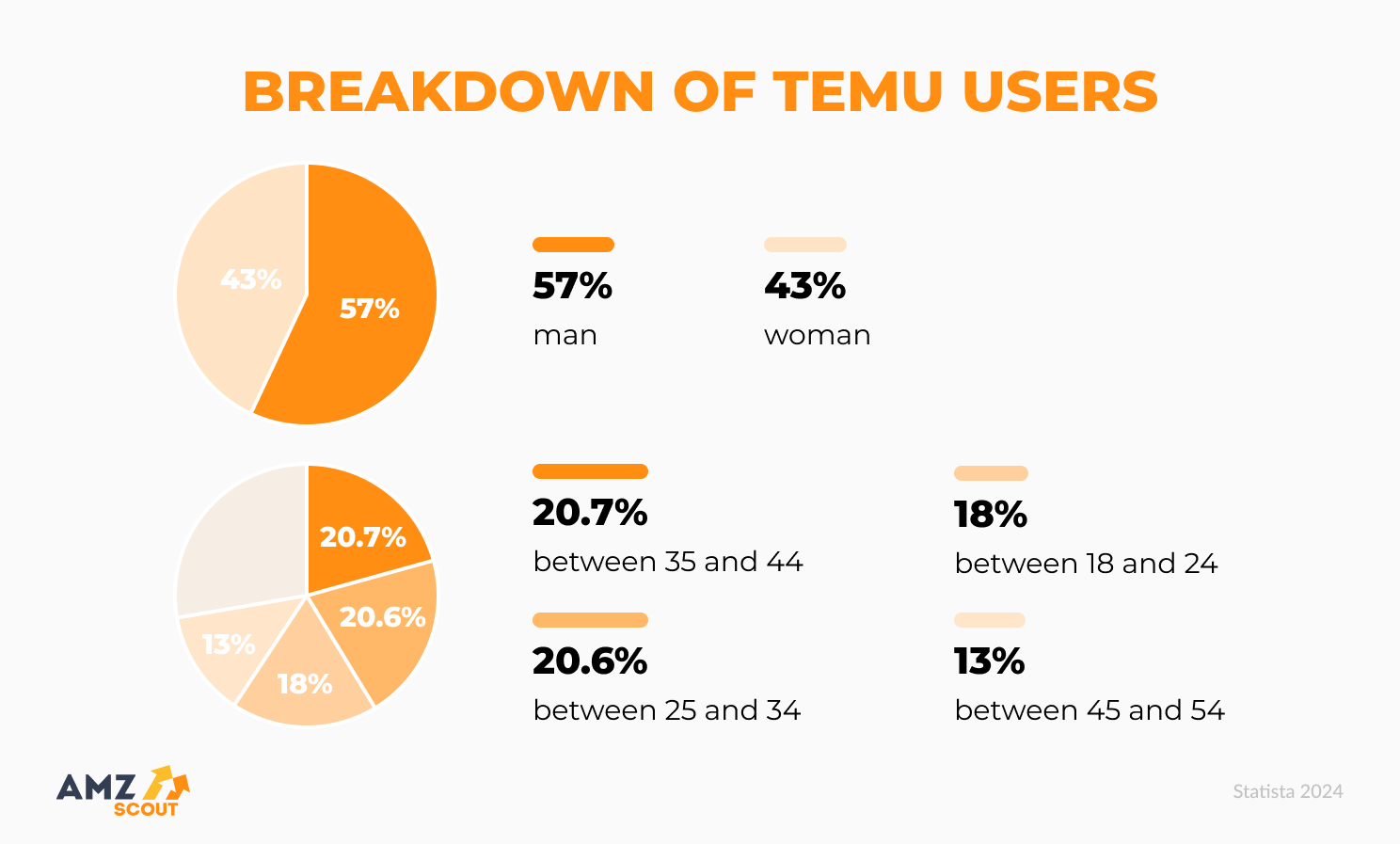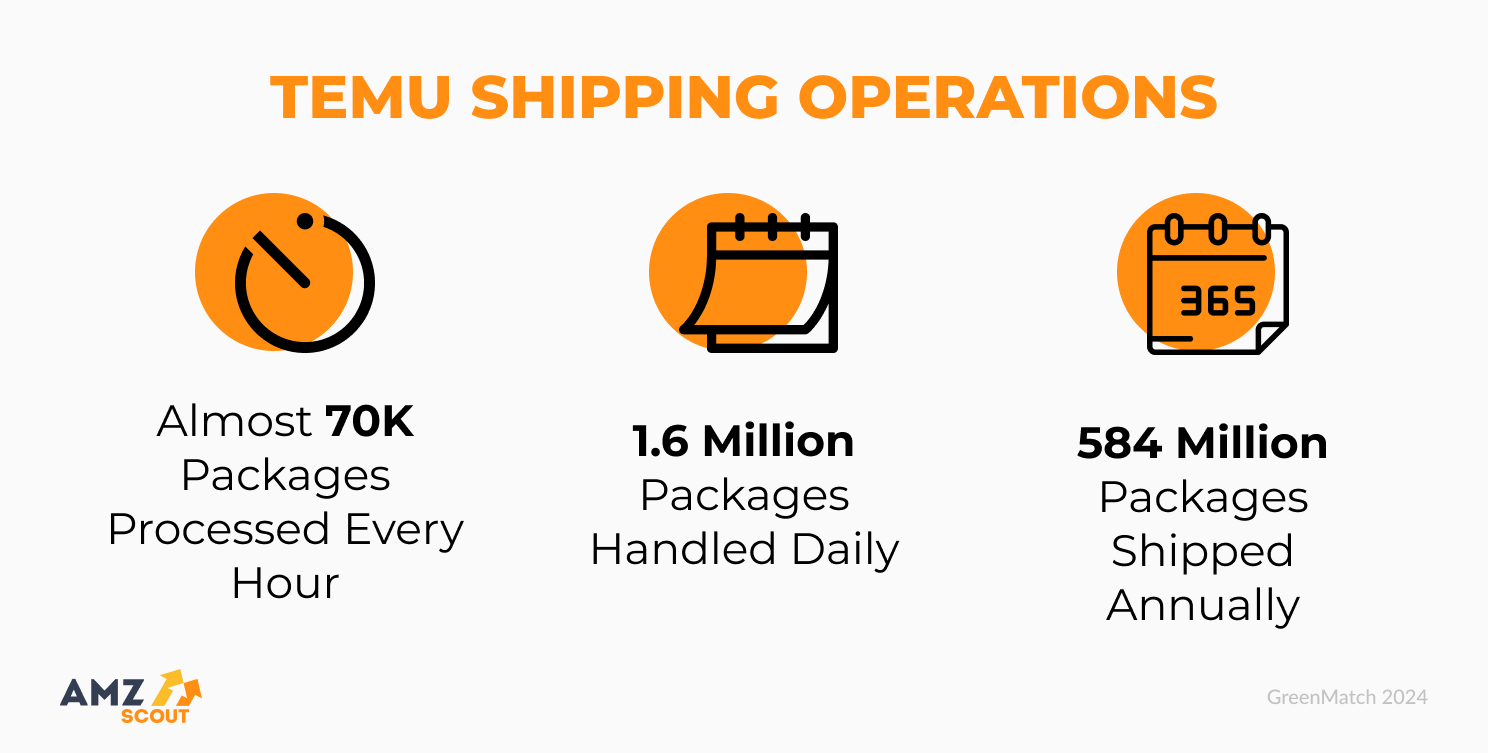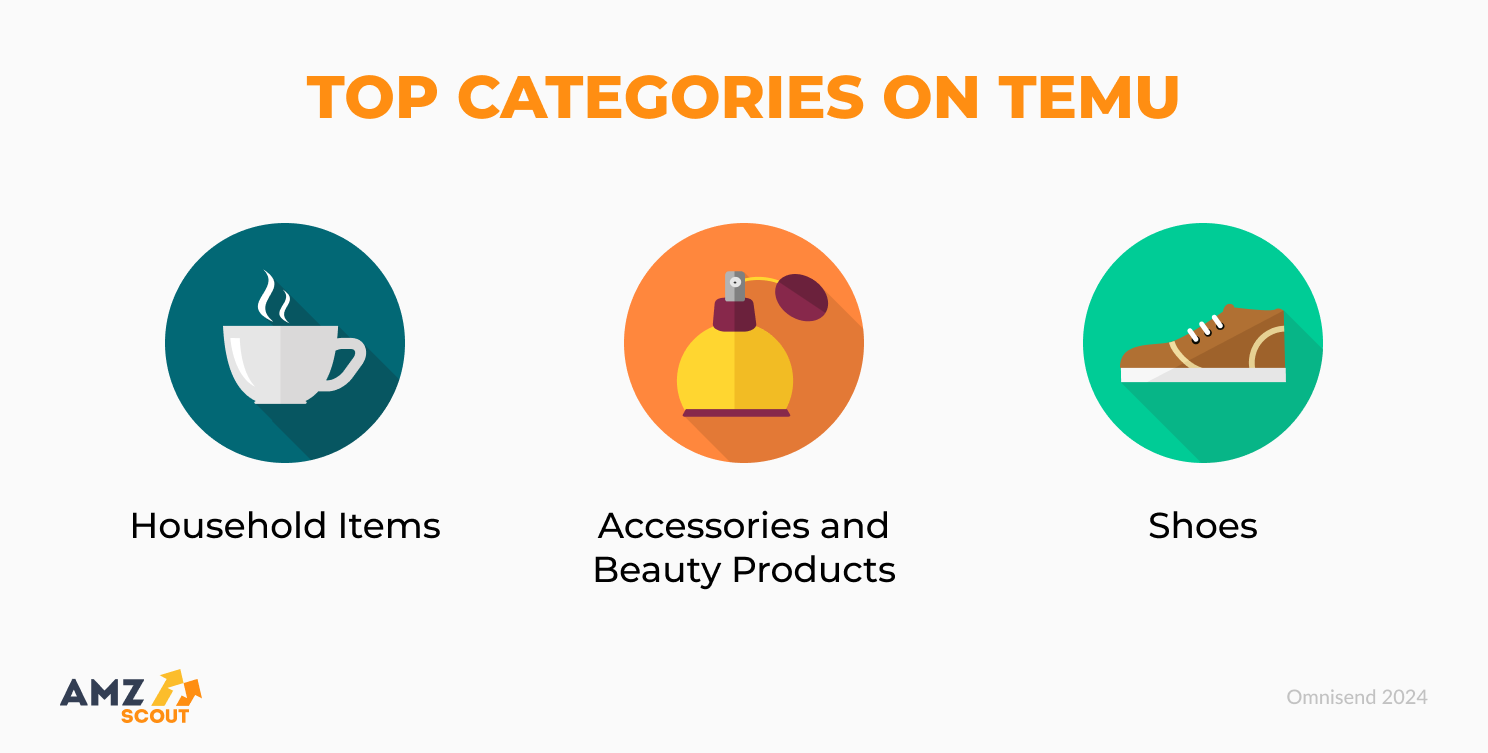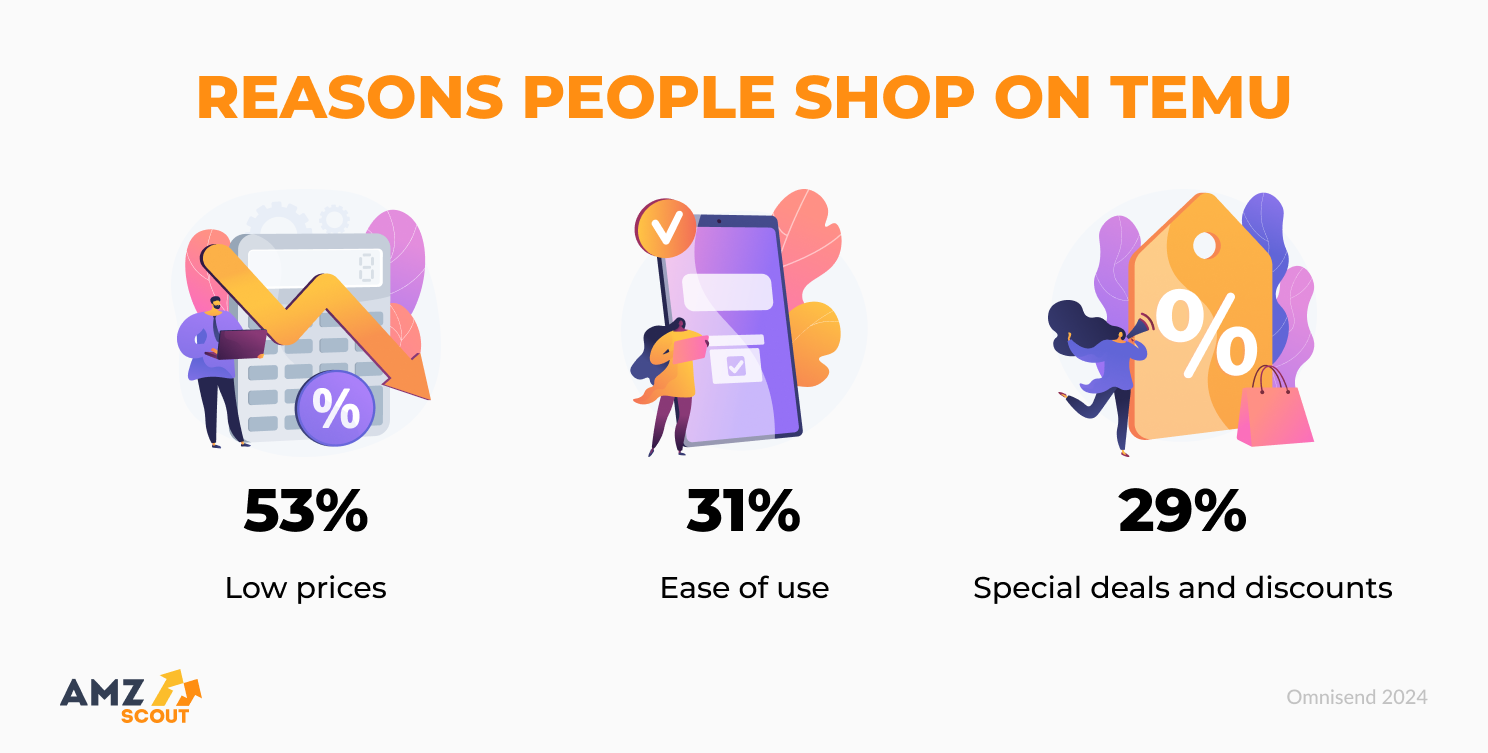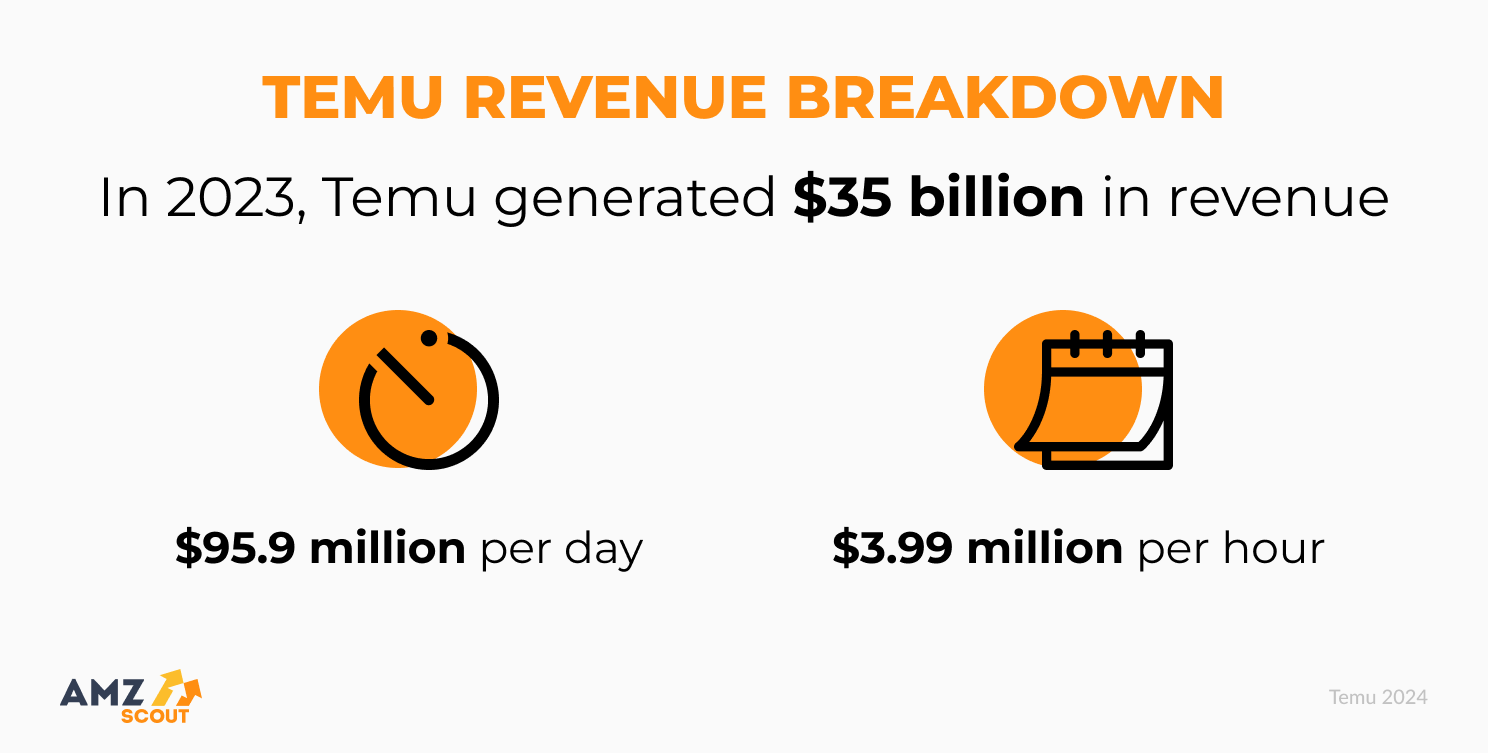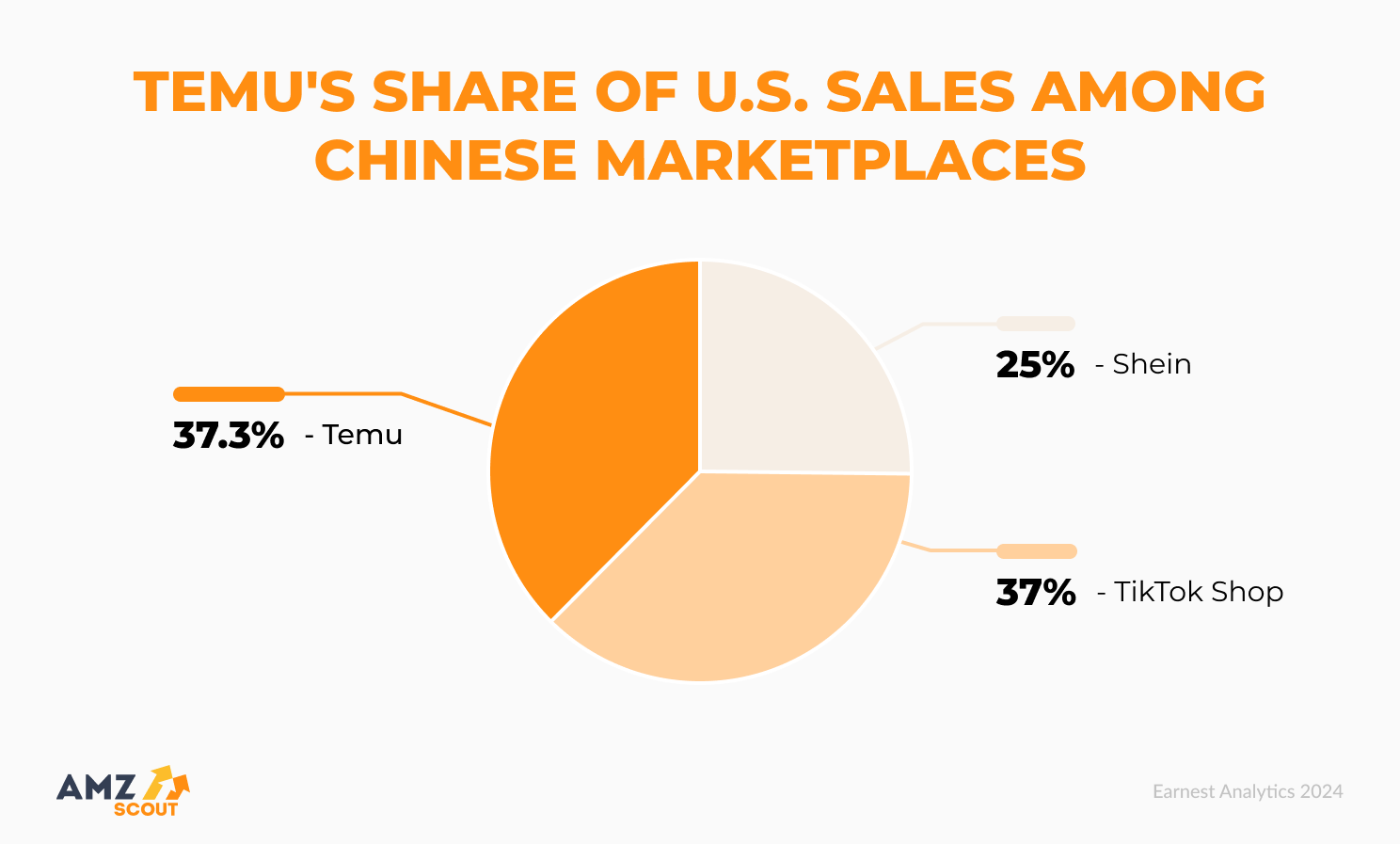
Temu Statistics: 18 Latest Insights and Facts for 2025
Temu is an e-commerce platform launched in China in 2022 that has quickly made a name for itself in the U.S., already competing with giants like Amazon. Its standout approach connects shoppers directly with manufacturers, cutting out the middleman and offering lower prices. Temu also uses gamification and other engaging features to keep users hooked and encourage spending, fueling its rapid growth.
In this article, we’ll share 18 key facts about Temu to help you gain a better understanding of the platform and its impressive rise in the e-commerce world.
Please note that this information is accurate only as of the date this article was written.
1. Temu App Performance
One way to measure an e-commerce platform’s performance is by tracking the number of app downloads, which reflect customer interest and market penetration. Temu has emerged as one of the most popular shopping apps, consistently gaining millions of downloads each month.
In the second quarter of 2025, the e-commerce giant’s global monthly active users (MAU) soared to 416.5 million, a striking 68% jump from a year ago and a solid 3% gain from the previous quarter.
Temu’s cumulative downloads cracked the 1 billion mark in Q2, marking a staggering 93% increase compared to last year and a 12% rise since Q1. Latin America emerged as the fastest-growing region, with downloads skyrocketing 148% year-over-year, underscoring the platform’s accelerating global reach.
2. Temu Website Traffic
Temu’s online presence is matching its explosive app growth. In June 2025 alone, temu.com drew an impressive 2.11 billion visits. The United States remains Temu’s largest single market, accounting for 31.6% of total web traffic. That translates to roughly 665 million visits from U.S. shoppers in a single month, cementing the platform’s dominance stateside while it continues to gain traction globally.
In addition, between January and February 2025, Temu’s organic search traffic rose 4.3% month-over-month, while paid search traffic fell by 6.04%, suggesting a gradual pivot towards more organic growth.
3. Temu Global Presence
After entering the U.S. market in 2022, Temu continued to expand rapidly, covering numerous countries and regions across Europe, Latin America, Africa, and Oceania. By the end of July 2024, Temu launched in Thailand, bringing its presence to 79 countries within just two years.
While Temu's prices are unbeatable in many countries, the platform faces tough competition from other low-cost retailers in Southeast Asia. As a result, its expansion in this region has been slower and more cautious.
4. Temu Demographics
Temu’s shopper base in 2025 is almost perfectly split down the middle - 50.31% male and 49.69% female - making it one of the more evenly balanced audiences in e-commerce.
When it comes to age, the platform’s biggest following comes from the 25–34 bracket, which accounts for 21.48% of all visitors. Close behind, 35–44-year-olds make up 19.17%, signaling strong appeal among both younger millennials and older Gen Z shoppers. Notably, almost half of Temu’s income comes from high earners who make over $190,000/year.
5. Number of Temu Sellers
It's difficult to pinpoint the exact number of sellers on Temu, as this figure is constantly evolving. However, there currently are around 100,000 sellers in the U.S. and 200,000 international merchants. As Temu continues to expand, they aim to increase these numbers to 200,000 U.S. sellers and 300,000 international sellers, respectively.
With its vast global customer base, Temu offers significant profit potential. In order to succeed on the platform, it's vital to develop a selling strategy tailored to Temu's unique dynamics.
Read this guide to learn more about how to sell on Temu.
6. Temu Stats on Shipping Operations
Temu’s low prices start at the source. Most of its products are shipped directly from China, where the platform partners with manufacturers to keep costs competitive. This direct-to-consumer model is a key driver of Temu’s affordability.
In select markets, including the United States, Canada, Australia, and the United Kingdom, Temu also operates local warehouses to speed up delivery times for certain items. However, European shoppers currently receive all orders from China, meaning longer shipping windows compared to other regions.
7. Number of Products on Temu
Temu’s virtual shelves are anything but sparse. As of 2024, the platform offers roughly 10 million Stock Keeping Units (SKUs) worldwide, giving shoppers an almost limitless range of choices. In the U.S. market alone, about 2 million items are currently available, a number Temu plans to at least double in the near future.
The company’s expansion strategy is particularly focused on home goods, aiming to bring U.S. shoppers an even broader selection without sacrificing the platform’s signature affordability.
8. Top Categories on Temu
Temu features a broad array of products, appealing to a wide audience all across the U.S., U.K., Australia, and Canada. According to recent research conducted in these countries, here are some of the most popular categories on Temu:
Household Items: 35% of purchases
Accessories and Beauty Products: 29% of purchases
Shoes: 35% of purchases
Recently, Temu has also been expanding its selection of vintage and handmade products, making it increasingly competitive with Amazon and Etsy.
9. How Much Time Do Shoppers Spend on Temu?
In June 2025, temu.com logged 2.11 billion visits, with shoppers spending an average of 9 minutes and 2 seconds per session, a substantial amount of browsing time in the fast-paced e-commerce space.
However, overall traffic dipped slightly compared to May, down 8.82%. Even with this decline, the platform’s high session duration suggests that Temu continues to hold shopper attention once they land on the site.
10. How Much Money Do People Spend on Temu?
In the U.S., about 40% of Temu shoppers keep their transactions modest, spending $20 or less per purchase. This highlights the platform’s appeal for budget-conscious buyers looking for great deals.
Across the broader social commerce landscape, shoppers spend an average of $59 per purchase on TikTok Shop. Meanwhile, European users tell a different story: French Temu shoppers spend around €300 annually, surpassing Shein’s €270 average and signaling strong loyalty and growing engagement in that market.
11. Why Do People Shop on Temu?
Temu’s convenient buying options offer several compelling reasons for shoppers to choose this platform. According to a recent survey of respondents from the U.S., U.K., Australia, and Canada, here are the most impactful reasons for shopping on Temu:
53% cited low prices
31% appreciated the ease of use
29% were attracted by special deals and discounts
These factors collectively highlight Temu's appeal, particularly among budget-conscious consumers seeking a user-friendly shopping experience.
12. Temu's Net Worth
In 2025, PDD Holdings (the parent company behind Temu) boasts a net worth of $128.79 billion. While Temu represents just a fraction of PDD’s vast portfolio, this places its value comfortably below Shein’s estimated $100 billion but still within striking distance in the fast-growing online retail space.
When compared to giants like Amazon, valued at nearly $1.5 trillion, Temu still has room to grow. But with its rapid expansion and increasing market presence, it’s a company to watch as it aims to climb the ranks of e-commerce heavyweights.
13. How Much Does Temu Make Daily?
Temu’s sales momentum is nothing short of impressive. Financial analyses project that its gross merchandise volume (GMV) will hit approximately $40.9 billion in 2025.
Breaking that down, Temu moves roughly $112 million in merchandise every single day, highlighting its massive scale and the sheer volume of transactions flowing through the platform.
14. Temu's Advertising Strategy
In 2023, Temu invested a hefty $3 billion in marketing, with $2 billion funneled specifically into Meta Ads to capture social media shoppers. But the landscape has shifted in 2025.
Facing heavy tariffs and regulatory hurdles in the U.S., Temu dramatically scaled back its American ad spend, halting Google Shopping ads and slashing Facebook Ads by April 2025. Meanwhile, the company ramped up its presence in Europe, boosting advertising spend by 40% month-over-month in France and 20% in the UK, signaling a clear pivot to markets with fewer barriers and bigger growth potential.
15. Temu’s Growth
As of early 2025, Temu boasts an impressive 292 million monthly active users worldwide, including 185.6 million in the U.S. and 92 million across the European Union. The platform has evolved beyond its original “direct-from-China” model, adopting a hybrid strategy where roughly 25% of U.S. gross merchandise volume (GMV) now comes from sellers stocking inventory in local U.S. and European warehouses.
This shift reduces reliance on small shipments from China, helping Temu navigate import tariffs and deliver faster, more reliable service. Sellers with local stock handle their own fulfillment, creating a smoother customer experience. Backed by PDD Holdings Inc. (NASDAQ: PDD), one of the top e-commerce stocks with strong long-term potential, Temu reported a blockbuster Q2 2025 with monthly active users soaring 68% year-over-year to 416.5 million, and daily active users rising 65% to 70.5 million.
Despite its rapid expansion and impressive user growth, Temu’s parent company, PDD Holdings, recently faced a dip in profits, highlighting the challenges of balancing aggressive growth with sustainable financial performance.
16. Temu's Market Share
In 2025, Temu carved out a solid 17% share of the U.S. discount store market, proving its strong foothold among budget-conscious American shoppers. Meanwhile, in China, Temu leads the online retail space with a 37.3% market share - just edging out TikTok Shop at 37% and far ahead of Shein’s 25%
The Americas remain Temu’s biggest battleground, with the U.S., Mexico, and Chile together accounting for 42% of the platform’s global market share. Looking to the future, Temu’s European gross merchandise volume (GMV) is on track to surpass $15 billion in 2025 and could top $20 billion by the end of 2026, positioning the company as one of Europe’s top online marketplaces.
17. Temu Competition
Temu’s main competitors are other large Chinese low-cost marketplaces, and this rivalry takes interesting turns across different demographics. According to consumer reports, U.S. men rated Temu higher than Shein, but lower than TikTok Shop. Women, on the other hand, gave Temu a higher rating than men, but preferred Shein and TikTok Shop over other Chinese marketplaces.
In terms of competition, Temu faces tough challenges from Shein in certain categories. For children’s clothing, Shein captures 20% of the market share, while Temu lags slightly behind at 17%.
However, when it comes to adult clothing, Shein leads with over 50% of the market share, leaving Temu struggling to keep up. In the electronics category, Temu is on more equal footing, matching the influence of TikTok Shop and AliExpress, and signaling its growing strength in this segment.
18. Temu's Sustainability Efforts
While Temu’s rapid growth comes with significant carbon dioxide (CO2) emissions, raising questions about its environmental footprint, the company is taking steps to give back. Through a partnership with nonprofit Trees for the Future, Temu has helped plant over 17.5 million trees, aiming to offset some of its environmental impact and support global reforestation efforts.
As consumers increasingly prioritize sustainability, how Temu balances growth with green initiatives will be key to its long-term reputation and success.
Conclusion
Temu has rapidly gained popularity due to its low prices and diverse selling formats. Despite ongoing discussions about product legitimacy, the platform continues to expand into new markets and broaden its influence. With new opportunities for sellers and attractive deals for buyers, Temu is steadily carving out a space in the competitive e-commerce landscape.
